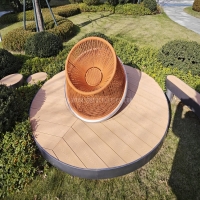Welcome to the website for landscape facilities products and knowledge.
How does the table’s shape influence interaction and visibility among participants in a meeting setting?
The geometry of a meeting table is far from arbitrary; it is a silent conductor of human interaction and a powerful determinant of visual accessibility. A rectangular boardroom table, a classic symbol of corporate hierarchy, inherently creates a dynamic of proximity and distance. Participants seated along the long sides are in close communion, while those at the head and foot often assume, or are ascribed, positions of leadership. This shape can inadvertently create "sides," potentially fostering an adversarial atmosphere or reinforcing departmental silos. Visibility is also uneven; direct eye contact is primarily feasible for individuals facing one another across the narrow width, leaving those at the far ends of the long axis visually disconnected.
In stark contrast, a round table promotes an immediate sense of equality and unity. With no head or foot, hierarchical cues are minimized, encouraging a more democratic flow of ideas. Every participant has a relatively equal line of sight to others, fostering inclusive eye contact and non-verbal engagement. This configuration is inherently collaborative, making it ideal for brainstorming sessions and team-building discussions where each voice is meant to hold equal weight. However, for larger groups, a single round table can become physically cumbersome, stretching sightlines and potentially reducing the intimacy it aims to create.
The U-shaped or horseshoe arrangement, often used for trainings and presentations, offers a hybrid model. It facilitates clear visibility towards a central focal point, such as a presenter or screen, while still allowing participants along the arms of the "U" to see each other. This supports a presenter-audience dynamic without completely sacrificing peer-to-peer interaction. Conversely, a square table shares some egalitarian benefits with the round table but can feel rigid at its corners, creating subtle physical barriers between individuals seated at those points.
Ultimately, the choice of table shape is a strategic decision. A rectangular table may suit formal, decision-making meetings with a clear leader. A round table excels in fostering collaborative, creative synergy. A U-shape optimally supports information dissemination with an element of group discussion. By consciously selecting the table's form, organizations can architect not just the physical space, but the very quality of communication and connection within it.
Related search:

Recommendation
Swivel chair-Specialty steel structure woven rattan leisure chair with rotatable design